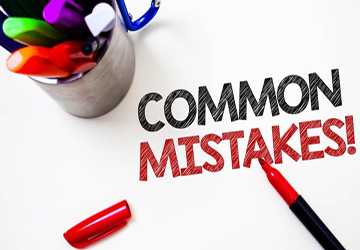Selecting the Optimal Insurance Policy
Choosing the right policy can be complex, but with the right approach, you can find the best policy for your needs. This guide will help you make an informed decision.
Understand your needs
The first step in choosing the best insurance is to understand your needs. Ask yourself what you need to protect and why. For example, life insurance can provide financial security for your loved ones if you have a family. Home insurance is essential to protect your belongings and possessions if you own a home. Evaluate your financial situation, family responsibilities, and long-term goals to determine the type of insurance you need.

Types of insurance policies
Different insurance policies can meet various needs. Here are some common types:
Life insurance can be divided into term life insurance, whole life insurance, and universal life insurance. Term life insurance provides you with coverage for a specific period, while whole life and universal life insurance provide lifetime coverage with a savings portion that grows over time.
Health Insurance: Covers medical expenses through various plans, such as Health Maintenance Organizations (HMOs), Preferred Provider Organizations (PPOs), and Exclusive Provider Organizations (EPOs).
Auto Insurance: Protects against vehicle-related damages and liabilities.
Home/Renters Insurance: Provides home and personal belongings coverage against theft, damage, and disasters.
Disability Insurance: Provides income replacement if you cannot work due to illness or injury.
Ratings of insurance providers
When choosing an insurance company, consider financial strength, customer service, and the range of policy options offered. Economic stability is crucial because it indicates a company's ability to pay claims in the future. Companies like MassMutual, Guardian Life, and State Farm are highly rated for financial stability.
Important factors to consider
- Coverage and Benefits: Ensure the policy offers enough coverage to meet your needs. Regarding life insurance, consider additional features, such as clauses that provide extra protection, such as B. Accidental Death Benefit or Premium Waiver.
- Cost: Compare premiums from different companies to find a policy that offers the best value for your money. While finding an affordable premium is important, don't give up coverage because of price. Use online tools like Policygenius to compare rates and insurance options.
- Policy Terms: Understand the terms and conditions of your policy, including exclusions and limitations. For example, term life insurance has a fixed term, while capital life insurance provides lifetime coverage with an investment component.
- Claims handling: Investigate how easy it is to file a claim and how quickly the insurance company responds. Customer reviews and ratings can provide insight into how efficiently a company handles claims.

Steps to choosing the best policy
- Assess your needs: Determine the type and amount of insurance you need based on your financial situation, family obligations, and future goals.
- Research providers: Research the financial strength and reputation of different insurance companies. Check reviews and customer reviews from agencies like AM Best.
- Compare policies: Use comparison tools to evaluate policies from different insurance companies based on coverage, benefits, and costs. Consider online and traditional insurance companies.
- Consult an expert: If you need more information about the best policy, contact an insurance broker or financial advisor for personalized
- advice. Read the fine print: Before making a decision, read the policy document carefully to understand all terms and exclusions.
Common mistakes to avoid
Underinsurance: Not having enough coverage can lead to financial problems. Make sure your policy adequately covers all potential risks.
Ignore exclusions: Not understanding what is excluded in your policy can lead to unexpected expenses. Read the policy documents carefully to understand what is and isn't covered.
Choosing based on price alone: Choosing the cheapest policy based on coverage and benefits can be costly. Make sure you're getting the best value for your money.
Discussion in detail
The nuances of health insurance: Consider your health needs and preferences when choosing health insurance. HMOs generally have lower premiums and out-of-pocket costs but require a network of doctors and hospitals. PPOs offer more flexibility in choosing healthcare providers but are more expensive. EPOs are a middle ground that requires you to use a network without requiring specialist referrals. Evaluate your medical history, frequency of doctor visits, and your preferred healthcare providers to determine which type of plan best suits your needs.
Assessing financial strength: A company's financial strength is critical to paying claims. Check out ratings from agencies like AM Best, Moody's, and Standard & Poor's. These ratings reflect an insurance company's financial health and stability, giving you confidence in its ability to meet insurance obligations. For example, companies with an AM Best A++ rating are considered to have done an excellent job meeting ongoing insurance obligations.
Customer service and reviews: Good customer service is essential for a worry-free experience. Look for insurance companies with high customer satisfaction ratings and positive reviews. Platforms such as the National Association of Insurance Commissioners (NAIC) provide data on consumer complaints and help you identify insurers with a good track record. Also, check if the insurer offers easy-to-use online tools for managing your policy and filing claims.
Riders and Adjustments: Riders are additional benefits you can add to your policy to improve your coverage. Standard life insurance endorsements include accelerated death benefits, which pay a portion of your death benefit if you are diagnosed with a terminal illness, and waivers of premiums, which waive your premiums if you become incapacitated. Customizing your policy with additional coverage can provide security and peace of mind.
Conclusion
Choosing the best insurance policy requires understanding your needs, evaluating different types of coverage, researching providers and comparing policy details. By taking a holistic approach and considering all essential factors, you can make an informed decision that provides you and your family with the proper protection and peace of mind. Avoid common mistakes like underinsurance or choosing based solely on price, and always read the fine print of terms and conditions. You can purchase a policy that provides valuable protection and financial security with careful planning and consideration.





